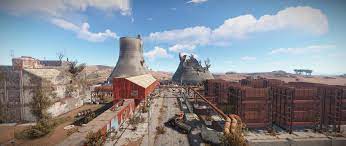
Monuments are symbols of history and culture that stand the test of time. However, over time, these structures can deteriorate due to natural processes such as corrosion. Corrosion is the gradual destruction of materials by chemical reactions with their environment. In this article, we will explore the science behind corrosion and why monuments rust.
What Causes Corrosion?
Corrosion occurs when a metal reacts with its environment, such as air or water. The most common form of corrosion is rust, which is the result of iron reacting with oxygen in the presence of water. Other metals, such as copper and aluminum, can also corrode but in different ways.
Factors That Contribute to Corrosion
Several factors contribute to corrosion, including humidity, temperature, and pollution. Humidity is a significant factor as it increases the amount of water in the air, which can speed up the corrosion process. Temperature also plays a role as higher temperatures can accelerate chemical reactions. Pollution can also contribute to corrosion as it can introduce harmful chemicals into the environment.
How Does Corrosion Affect Monuments?
Monuments are often made of metal, such as bronze or iron, which are susceptible to corrosion. Over time, the metal can weaken and lose its structural integrity, leading to cracks and other forms of damage. This can be particularly problematic for monuments that are exposed to harsh environments, such as those near the ocean or in heavily polluted areas.
Preventing Corrosion on Monuments
There are several ways to prevent corrosion on monuments. One common method is to apply a protective coating to the metal surface. This coating acts as a barrier between the metal and the environment, preventing water and other harmful substances from coming into contact with the metal. Another method is to use sacrificial anodes, which are pieces of metal that are more reactive than the metal in the monument. These anodes will corrode instead of the monument, protecting it from damage.
Restoring Corroded Monuments
If a monument has already suffered from corrosion, there are several methods for restoring it. One method is to use abrasive blasting to remove the corroded material and then apply a protective coating. Another method is to use electrochemical techniques, such as electroplating, to restore the metal surface. These techniques can be effective but require specialized equipment and expertise.
The Importance of Maintaining Monuments
Maintaining monuments is essential to preserving their historical and cultural significance. Regular inspections and maintenance can help identify and address corrosion before it causes significant damage. It is also important to use appropriate cleaning methods that do not damage the monument’s surface or remove any protective coatings.
The Role of Technology in Monument Preservation
Technology has played a significant role in monument preservation in recent years. For example, 3D scanning and printing technology can be used to create accurate replicas of damaged or deteriorated parts of a monument. This can be particularly useful for restoring intricate details that may be difficult to recreate using traditional methods.
Examples of Monument Restoration
There are many examples of successful monument restoration projects around the world. One such project is the restoration of the Statue of Liberty in New York City. The statue underwent extensive restoration in the 1980s, including the replacement of corroded iron supports with stainless steel. Another example is the restoration of the Taj Mahal in India, which involved cleaning and restoring the marble surface using traditional techniques.
The Future of Monument Preservation
As technology continues to advance, new methods for monument preservation will emerge. For example, researchers are exploring the use of nanotechnology to create protective coatings that are more effective than traditional coatings. Additionally, advances in materials science may lead to the development of new materials that are more resistant to corrosion.
Conclusion
In conclusion, corrosion is a natural process that can cause significant damage to monuments over time. However, with proper maintenance and restoration techniques, monuments can be preserved for future generations to enjoy. As technology continues to advance, new methods for monument preservation will emerge, ensuring that these symbols of history and culture continue to stand the test of time.